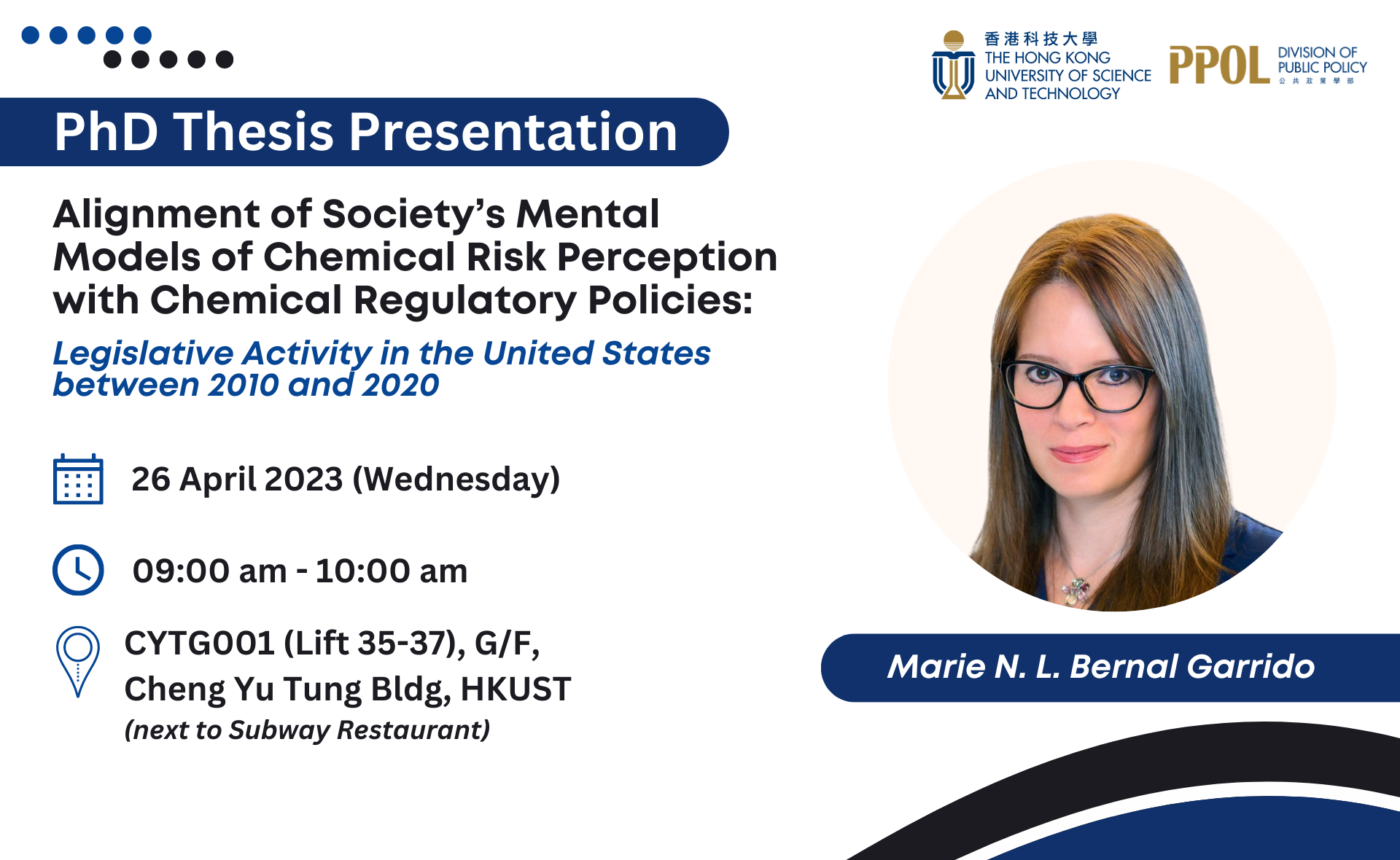Division of Public Policy (PPOL)
Ms. BERNAL GARRIDO, Marie Noel Loullie

ABSTRACT
Between 2010 and 2020 chemical regulatory policy in the United States has seen significant developments. Changes in approach, regulatory strategy, and focus have marked legislative activity both at state and federal levels of governance. This decade also witnessed unprecedented political upheaval which reverberated throughout the American regulatory framework and lead to unusual efforts of deregulation of toxic chemicals and environmental protection. All of these shifts developed against a backdrop of several episodes of chemical-related scandal and social unrest in a policy regime prone to strong legally adversarial measures, where public perception is often expressed through the courts and the electoral system. This regulatory environment provides a unique perspective into the dynamics of policymaking and policy change in an area of regulation that is uniquely positioned to react to public opinion and calls for governmental intervention. Participation and co-creation debates point out the difficulties and risks inherent in opinion-reactionary policy frameworks, consistently pointing out biases and ‘irrational’ perceptions that lack objectivity and factual certainty and are thus considered risky guides and influences. At the same time, cognitive and behavioral psychology continue furthering our understanding of factors that contribute to people’s calculations of risk, as well as the biases and heuristics involved in decision making, especially in situations of fear and uncertainty. But the academic literature in relation to regulatory policy and decision making fails to identify in any comprehensive way areas or types of regulatory policy that take into consideration citizen’s preferences, in this case for more or less stringency and protection. In an effort to bridge this gap, my research first analyzes legislative activity at state and federal level as it pertains to toxic and hazardous chemicals, and then examines patterns of behavior related to people’s attitudes towards chemicals and towards risk, to finally be able to determine whether or not there is an alignment between people’s chemical risk perceptions and the regulatory policies that are instituted to mitigate those risks.
Division of Public Policy (PPOL)
